UNESCO World Heritage Sites in England open a door to centuries of secrets, creativity, and triumph. Imagine standing where battles were fought, marveling at wonders built by skilled hands, or wandering through towns that inspired great thinkers. These remarkable spots offer more than photo opportunities; they are essential cultural heritage sites that tell stories, lessons, and living proof of human imagination at its best. From craggy coastlines carved by ancient seas to peaceful gardens, each place reflects the outstanding universal value of England’s enduring spirit.
Contents
- 1 What Makes a UNESCO World Heritage Site?
- 2 Stonehenge and Avebury: Mystical Monuments of Prehistoric Britain
- 3 The Tower of London: Stories Behind the Fortress
- 4 Bath: England’s Roman Legacy
- 5 Durham Castle and Cathedral: Norman Powerhouses
- 6 Canterbury Cathedral, St Augustine’s Abbey, and St Martin’s Church
- 7 Westminster Palace, Abbey, and Saint Margaret’s Church
- 8 The Lake District: Nature and Literary Inspiration
- 9 Ironbridge Gorge: Birthplace of the Industrial Revolution
- 10 Studley Royal Park and Fountains Abbey: Harmony of Nature and Ruins
- 11 Blenheim Palace: Churchill’s Grand Ancestral Home
- 12 The City of Liverpool: Maritime Mercantile Wonders
- 13 Jurassic Coast: 185 Million Years of Natural History
- 14 Saltaire: Victorian Model Village
- 15 The Cornwall and West Devon Mining Landscape
- 16 Royal Botanic Gardens, Kew: Nature’s Living Library
- 17 A Guide to Visiting UNESCO World Heritage Sites In England
- 18 Conclusion: Discovering England Through Its UNESCO Treasures
- 19 Got questions about UNESCO World Heritage Sites in England? Here are the answers travelers look for most
What Makes a UNESCO World Heritage Site?

The Criteria for Selection
Not every beautiful landmark earns UNESCO status. There are guidelines—set by UNESCO (the United Nations Educational, Scientific and Cultural Organization)—to pick the world’s most important places. Sites must show “Outstanding Universal Value.” That means they matter not just locally, but for all people, everywhere.
To make the list, a site must fit at least one out of ten strict criteria. These range from representing a masterpiece of human genius to showcasing life’s natural record or even being linked to important ideas, beliefs, or historical events. For example, the Lake District was picked for its role in changing creative thinking and nature conservation, while the Cornwall Mining Landscape marks a turning point in industry and technology.
Why England’s Sites Stand Out Globally
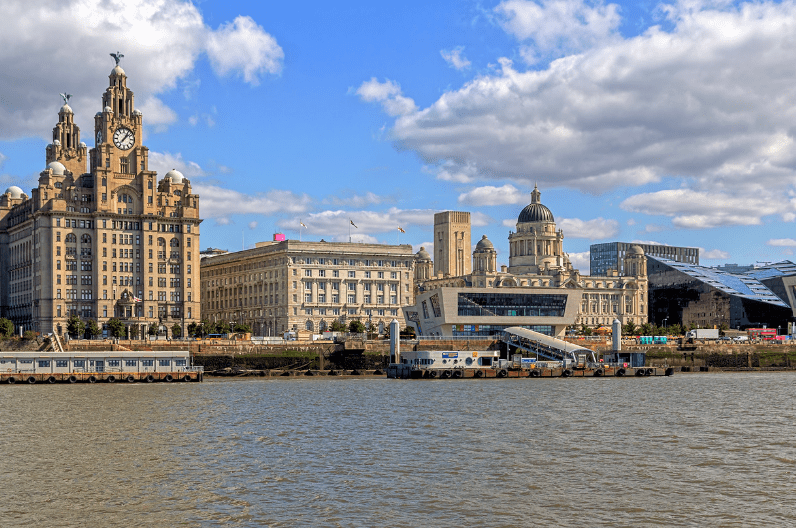
England’s sites stand out for their variety and influence, showcasing both cultural heritage and natural heritage. Whether it’s prehistoric stone circles like Stonehenge, soaring Gothic cathedrals, or one-of-a-kind gardens like Kew, these places helped shape ideas that traveled across continents. Outside of showing off stunning art or brave engineering, many are living communities—still serving as homes, places of learning, or thriving tourist hubs. Major English UNESCO World Heritage sites include sites in Bath, Liverpool, Greenwich, Westminster Abbey, and Ironbridge Gorge, exemplifying how heritage can fuel pride and unity while teaching lessons for the future.
Stonehenge and Avebury: Mystical Monuments of Prehistoric Britain
The Ancient Astronomers
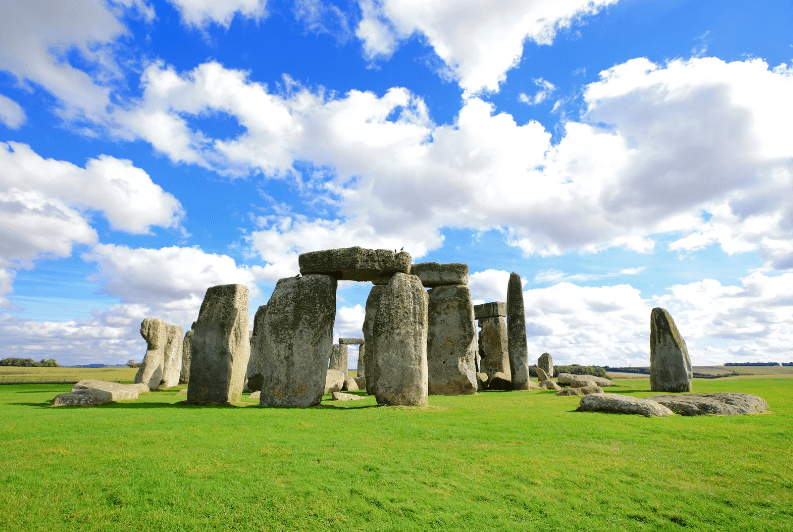
Stonehenge and Avebury, both UNESCO World Heritage sites, reach back over 4,500 years to a time before written history. While both are stone circles, Stonehenge is the most famous, with its iconic lintels and mysteries. Was it a temple, a graveyard, or an ancient observatory? Many theories suggest that the people who built Stonehenge tracked the sun and moon. The stones align with the summer and winter solstices, acting almost like a giant calendar. Nearby Avebury, although bigger, is less crowded—perfect for peaceful exploring.
Myths, Legends, and Modern Mystique
Stories swirl around these UNESCO World Heritage sites, where some believe giants built the stones and others whisper of druids, rituals, and hidden powers. Today, both locations draw spiritual seekers and travelers hoping to experience their cultural significance. English Heritage protects these important monuments, balancing tourism and preservation, making you wonder how much our distant ancestors knew that we’ve yet to rediscover.
The Tower of London: Stories Behind the Fortress
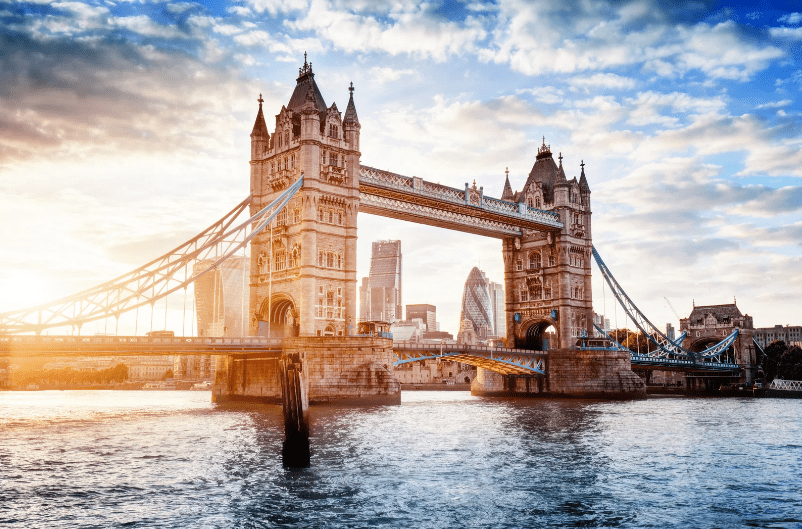
The Royal Menagerie and Crown Jewels
The Tower of London, started by William the Conqueror in 1078, has many tales to tell as a world heritage site. It once served as a palace, a prison, and even a zoo where the Royal Menagerie housed exotic animals. Today, the Crown Jewels are the star attraction—over 23,000 dazzling gems kept safe by armed guards. Visitors can see St Edward’s Crown, still used for royal coronations, and learn how guards known as “Beefeaters” protect this significant cultural heritage.
Historic Events and Tales of Intrigue
Blood has been spilled here at this world heritage site. From Anne Boleyn’s tragic end to secret plots in the towers, the site is steeped in drama. Political prisoners, daring escapes, and even mysterious ghosts all make an appearance in its long history, making it one of England’s most significant historical landmarks.
Bath: England’s Roman Legacy

The Roman Baths and Georgian Architecture
Bath, a notable world heritage site, is built on ancient springs that have drawn people since Roman times. The Roman Baths—finely preserved ruins—still bubble with warm, mineral-rich water. Walk the stone paths beneath the city and feel the echoes of Roman engineers. Step outside, and you’re surrounded by Georgian architecture from the 1700s: stately crescents, creamy stone houses, and elegant bridges make Bath almost like a living museum. The Royal Crescent and The Circus are two of England’s finest important monuments.
Jane Austen’s Connection to Bath
No talk of Bath is complete without Jane Austen, one of England’s most beloved authors. She lived in Bath, a city that boasts a rich cultural heritage, for several years and set two of her novels here. You can visit the Jane Austen Centre to learn about her daily life and stroll the streets she once described. The city’s mix of Roman roots and high-society style contributed to its status as a world heritage site, shaping Austen’s classic novels.
Durham Castle and Cathedral: Norman Powerhouses
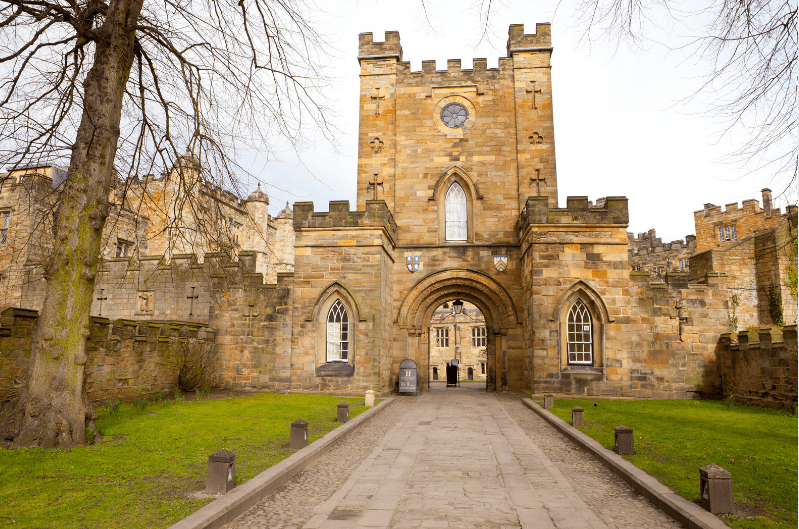
Monastic Heritage
Durham Castle and its neighboring cathedral represent significant landmarks of Norman England and are notable as a World Heritage Site. Built in the late 11th century under William the Conqueror, the cathedral housed Benedictine monks who were pivotal in preserving knowledge. Their scriptorium maintained a collection of hand-copied texts, ensuring that cultural heritage remained vibrant through turbulent periods.
Architectural Marvels
The cathedral’s tall, rounded arches and thick stone columns showcase early Gothic style and clever medieval engineering, making it an important monument in the region. Inside, visitors can admire the ribbed vault ceilings and stained glass windows. Durham Castle, now part of Durham University, holds stories of bishops who ruled as both religious leaders and feudal lords, contributing to its cultural heritage and significance as a UNESCO World Heritage site.
Canterbury Cathedral, St Augustine’s Abbey, and St Martin’s Church
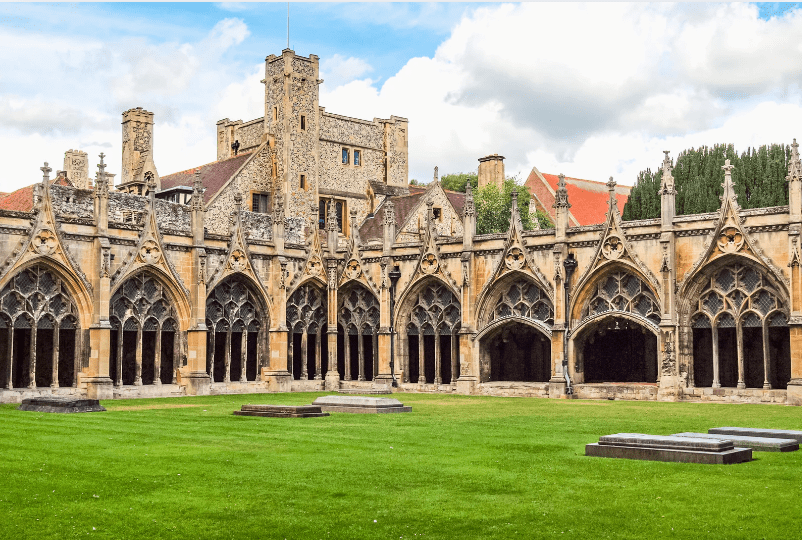
The Heart of English Christianity
Canterbury Cathedral, along with St Augustine’s Abbey and St Martin’s Church, narrates the story of Christianity’s arrival in England, making it a significant cultural heritage site. St Martin’s is recognized as Britain’s oldest church still in use, while St Augustine’s Abbey, founded by the first Archbishop of Canterbury, played a crucial role in spreading new faith and ideas, contributing to the region’s historic sites.
Pilgrims and Medieval Heritage
Medieval pilgrims from across Europe journeyed hundreds of miles to pray at this world heritage site in Canterbury. Geoffrey Chaucer’s “The Canterbury Tales” vividly describes their travels and stories, while today, the city’s cultural heritage continues to attract visitors, shops, and the annual Canterbury Festival.
Westminster Palace, Abbey, and Saint Margaret’s Church
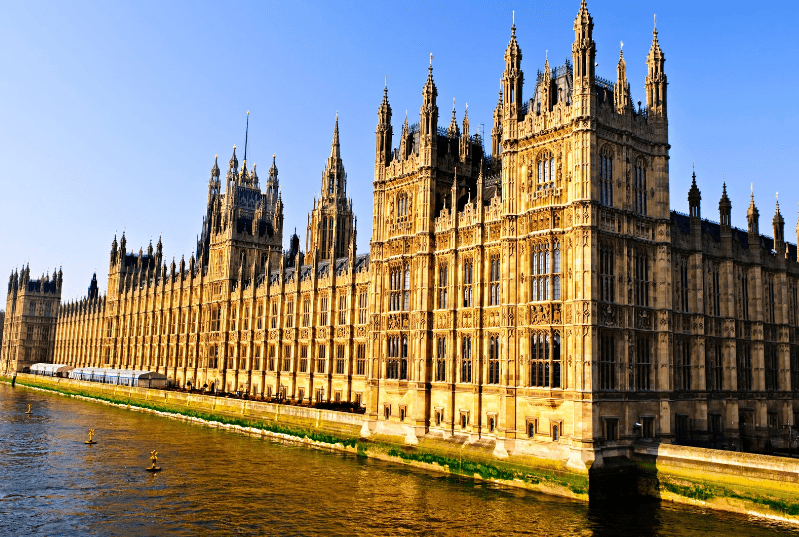
The Seat of British Power
Westminster isn’t just a name—it’s the center of British government and tradition, housing important monuments like the Houses of Parliament and Big Ben’s clock tower, which are part of the UNESCO World Heritage Site of Westminster Palace. Next door, Westminster Abbey has watched every monarch crowned since 1066, showcasing its cultural significance.
Coronations and Royal Weddings
Westminster Abbey isn’t only for politicians; it is also a significant cultural site in the United Kingdom. Kings and queens were crowned here, and many famous royals married beneath its high, Gothic arches. Queen Elizabeth II’s coronation and Prince William’s wedding to Catherine Middleton make this world heritage site special for millions. Poets’ Corner holds graves of writers like Chaucer and Dickens, joining the worlds of politics, faith, and art under one roof.
The Lake District: Nature and Literary Inspiration

William Wordsworth’s Romantic Roots
The Lake District, a popular tourist destination in the United Kingdom, is a land of rolling hills, tranquil lakes, and peaceful villages. Romantic poet William Wordsworth, who called it home, celebrated its natural heritage in his writing. Dove Cottage, an important monument in Grasmere, is open for tours and poetry readings.
Outdoor Adventures in Scenic Landscapes
This region, known for its natural heritage, is beloved by walkers, climbers, and nature lovers. England’s highest peak, Scafell Pike, offers a rewarding challenge amidst sheep-dotted fells, lush woods, and sparkling waters. Popular villages like Ambleside and Keswick welcome visitors with tea shops, cozy inns, and art galleries.
Ironbridge Gorge: Birthplace of the Industrial Revolution

Abraham Darby’s Engineering Feats
Ironbridge Gorge, a significant cultural heritage site, marks a turning point in history—the dawn of industrial progress. In 1779, Abraham Darby III built the world’s first iron bridge here, linking technology and trade, contributing to its status as a UNESCO World Heritage Site.
Museums and Heritage Trails
Today, the area is packed with interactive museums, showcasing its cultural heritage. The Iron Bridge, an important monument, still stands proud, and you can explore old blast furnaces, tile factories, and Victorian towns at Blists Hill, a notable site in the UK World Heritage Sites.
Studley Royal Park and Fountains Abbey: Harmony of Nature and Ruins
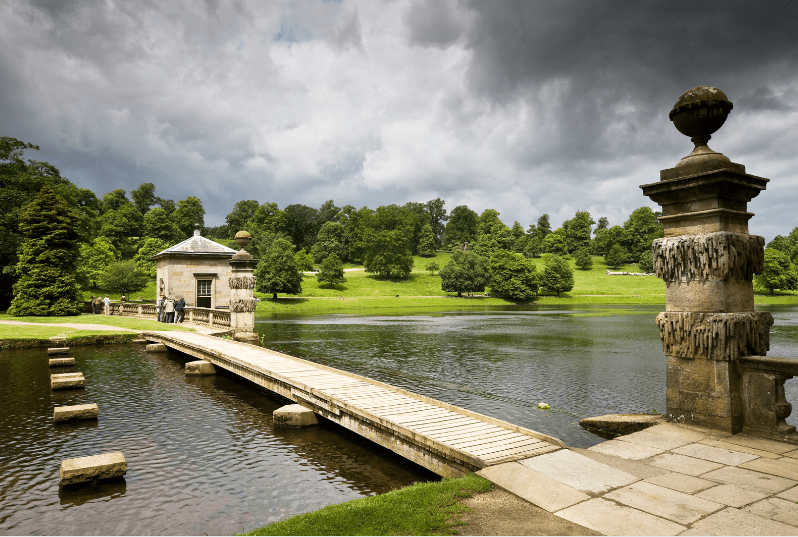
Cistercian Abbey Remains
Fountains Abbey, built in 1132, is one of England’s best-preserved monastery ruins and holds significant cultural heritage as a UNESCO World Heritage Site. Monks of the Cistercian order prayed, farmed, and worked here until Henry VIII’s reforms closed their doors, allowing visitors to feel the passage of centuries.
Deer Park and Ornamental Gardens
The abbey is nestled in Studley Royal Park—a mix of formal gardens, woodlands, and a wild deer park, which is recognized for its outstanding universal value as a UNESCO World Heritage Site. The landscape, shaped by landscape architects in the 1700s, blends natural beauty with careful planning.
Blenheim Palace: Churchill’s Grand Ancestral Home

Baroque Architecture and Parklands
Blenheim Palace, a UNESCO World Heritage Site in Oxfordshire, is a grand blend of stately home and art gallery. Built as a gift to the Duke of Marlborough after victory in battle, it’s a stunning example of English Baroque. Squared, sturdy towers rise over acres of formal gardens, fountains, and lakes. Lancelot “Capability” Brown designed the sweeping parkland, shaping lawns and water features that seem both natural and grand.
Winston Churchill’s Birthplace
Blenheim is more than a palace—it’s the birthplace of Sir Winston Churchill, former British Prime Minister and hero of World War II. This UNESCO World Heritage Site offers visitors a glimpse into Churchill’s childhood nursery, family portraits, and his letters. The palace, still home to the Marlborough family, features many rooms and gardens open for exploration.
The City of Liverpool: Maritime Mercantile Wonders
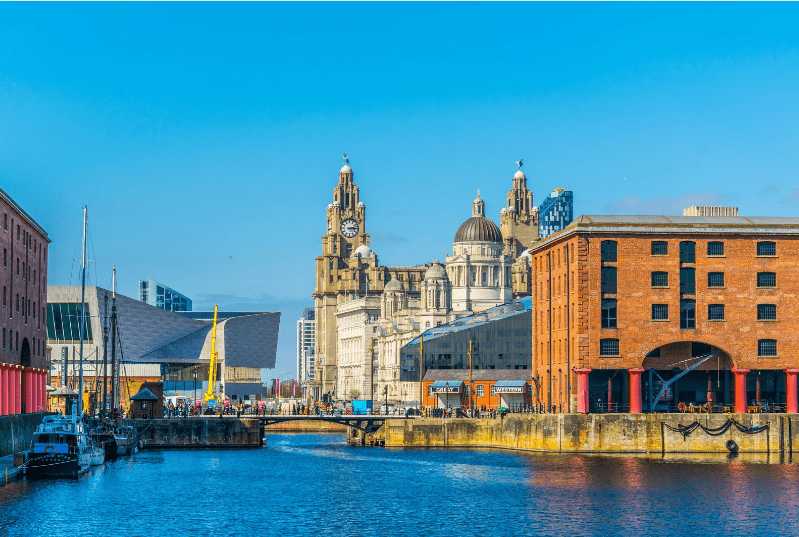
Historic Waterfront and The Beatles
Liverpool’s waterfront has long been a gateway for goods and music. The Albert Dock area, a UNESCO World Heritage site, is filled with museums, shops, and art showcasing the cultural heritage of this vibrant city. Visit The Beatles Story museum or snap a photo by the towering Liver Building, both important monuments that highlight Liverpool’s role in shipping not just goods, but also ideas and culture around the globe.
Shipping Heritage and Docks
Liverpool’s docks, a significant part of the city’s maritime heritage, handled millions of tons of cargo during the 18th and 19th centuries. The port became famous for its fast ships and creative dock systems, which contributed to its status as an important cultural site within the UK, showcasing its world heritage significance.
Jurassic Coast: 185 Million Years of Natural History

Fossil Hunting and Dramatic Cliffs
The Jurassic Coast, a UNESCO World Heritage Site spanning Dorset and Devon, tells an ancient story. Walk the cliffs, and you’ll see layers of rocks folded by time, packed with fossils from the age of dinosaurs. Places like Lyme Regis and Charmouth draw fossil hunters searching for ammonites and ichthyosaur bones, making it a popular tourist destination.
Charmouth, Lulworth Cove, and Durdle Door
Each spot along the Jurassic Coast, a designated World Heritage Site, has its own charm. Charmouth is ideal for fossil hunting with safe, family-friendly beaches. Lulworth Cove is a perfect semicircle, shaped by sea and stone, while Durdle Door’s natural rock arch towers above clear blue water, attracting nature lovers and photographers alike.
Saltaire: Victorian Model Village

Sir Titus Salt’s Vision
Saltaire stands as a model of what a community could be—thanks to Sir Titus Salt, a textile tycoon with a social conscience. In the mid-1800s, he built homes, a school, churches, and a hospital for his mill workers, creating a cultural site that reflects outstanding universal value. At a time when many industries ran in grim, unsafe towns, Saltaire promised green space, safety, and dignity, making it an important monument in the landscape of British overseas territories.
Textile Mill Heritage
Salt’s massive textile mill, now a collection of galleries and shops, remains the heart of the village and is a significant cultural heritage site. Here, steam engines once powered the cloth trade, shaping the future of British fashion. Today, you’ll find art by David Hockney, independent cafes, and carefully preserved streets.
The Cornwall and West Devon Mining Landscape
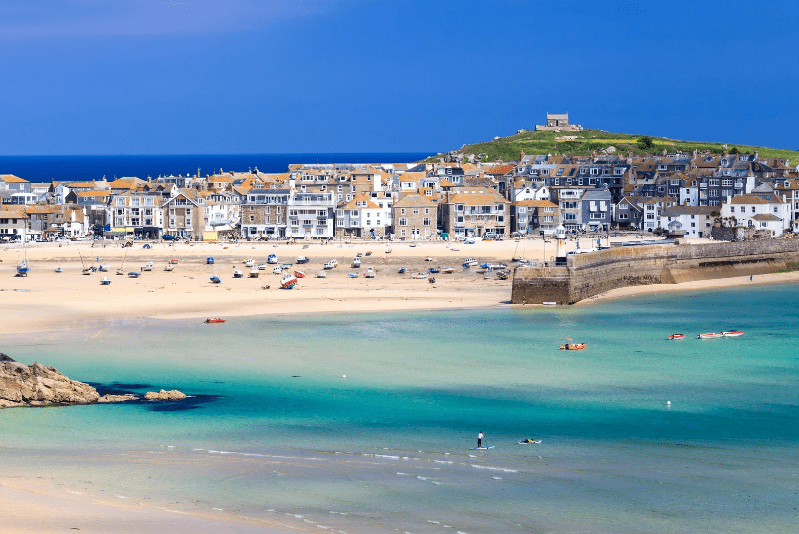
Tin and Copper Boom
This rugged southwest region, a significant part of the United Kingdom’s industrial heritage, changed the world by fueling the Industrial Revolution with tin and copper. Mines, which are now considered important monuments, dotted the hills and coast, driving invention and trade in the 18th and 19th centuries.
World-Changing Mining Advances
Innovation thrived here in the historic mining towns of Redruth, Camborne, and St Just, which feel like open-air museums. The tall engine houses and winding gear still mark the landscape, showcasing the area’s cultural heritage and significance as a potential UNESCO World Heritage Site.
Royal Botanic Gardens, Kew: Nature’s Living Library

Exploring Glasshouses and Gardens
Kew Gardens, a UNESCO World Heritage Site, is a haven for plant lovers and curious minds. Walk under the soaring glass roof of the Palm House, or climb the Treetop Walkway for a bird’s-eye view. Each greenhouse shelters rare plants from faraway places, while the outdoor gardens shift with every season, showcasing nature’s cultural heritage.
Scientific Discoveries and Plant Conservation
Kew isn’t just beautiful; it’s a vital research center recognized as a UNESCO World Heritage Site. Scientists here study plant genetics, fight invasive pests, and bank seeds to save endangered plants. Their collections include over 8 million dried specimens—true global treasures reflecting outstanding universal value. Kew’s mission: conserve plants, share new finds, and help feed and heal our planet.
A Guide to Visiting UNESCO World Heritage Sites In England
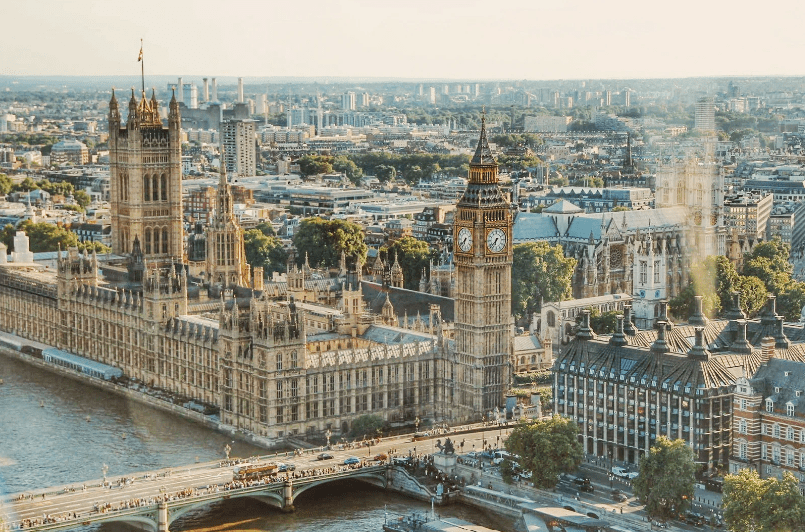
Practical Tips for Travelers
Plan to explore the glorious UNESCO World Heritage sites in England. Check websites for opening times—many sites, including important monuments, need tickets, and hours can change throughout the year. Gear up for England’s patchy weather. Bring good shoes for walking on uneven paths, whether among ancient stones or lush gardens, as guided tours enhance the experience.
Best Seasons, Accessibility for UNESCO World Heritage Sites In England
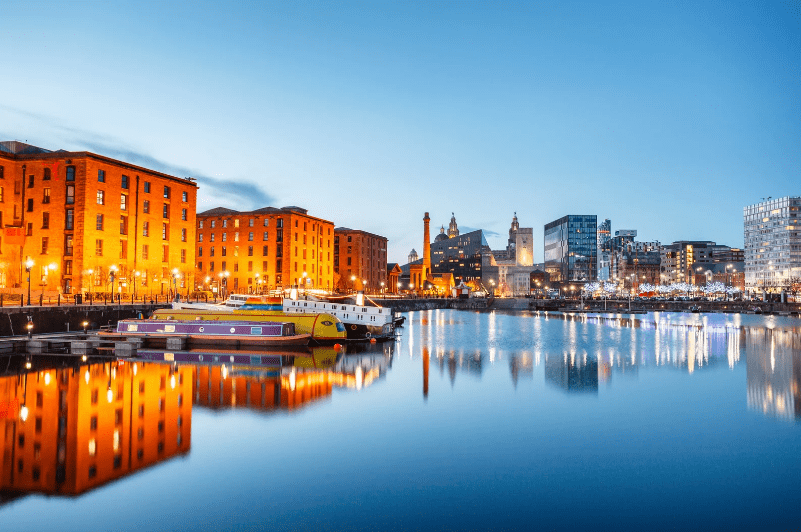
Spring and early summer bring gardens and parks to life—think bluebells, baby lambs, and mild weather. Peak summer gets busy, especially in places like Bath or Westminster, so aim for early mornings or late afternoons. Many sites, like Stonehenge or Kew, offer step-free paths, hearing loops, and accessible restrooms. Some world heritage sites, like Liverpool’s waterfront or Ironbridge Gorge, have special trails for strollers and wheelchairs. Check in advance, and don’t miss the chance to join a guided walk or family activity—they help make memories.
Conclusion: Discovering England Through Its UNESCO Treasures
Traveling to UNESCO World Heritage Sites in England is like reading a living storybook. Each place, from Stonehenge’s silent circles to Liverpool’s lively docks, plays a part in the country’s saga. You’ll encounter grand palaces, peaceful gardens, rocky beaches, and towns shaped by faith, art, and industry, all of which contribute to the cultural heritage of the nation.
These sites don’t just preserve the past; they connect us to people—ancient astronomers, inventive miners, rebel writers, and pioneering scientists—who shaped our future. They illustrate how ideas, discoveries, and even struggles link England to the wider human family and highlight the significance of its historic sites.
Your path through these treasures can be as quick or as slow as you want. Pick one or two to savor, or plan a longer journey to see many. Be ready to walk, learn, and wonder. Respect these places—not just for the rules, but for the ancient, living stories they hold.
Experience history firsthand, talk to the guides, and let curiosity guide your steps. England’s UNESCO sites aren’t just stops on a map. They’re invitations to see, touch, and understand a rich, shared heritage. Wherever you go, carry the stories with you—and pass them on.
Got questions about UNESCO World Heritage Sites in England? Here are the answers travelers look for most
1. What are the most famous UNESCO World Heritage Sites in England?
England’s most famous UNESCO World Heritage Sites include Stonehenge, Bath, the Tower of London, and Westminster Abbey. Each site shows the nation’s deep history, culture, and architecture. These landmarks attract millions every year, offering a window into England’s royal, religious, and creative past.
2. How many UNESCO World Heritage Sites are in England?
There are 16 UNESCO World Heritage Sites in England. They range from prehistoric monuments like Stonehenge to industrial marvels like Ironbridge Gorge. Each location highlights England’s mix of natural beauty, art, and innovation that shaped global culture and history.
3. Why are UNESCO World Heritage Sites in England important?
These sites protect England’s cultural and natural treasures for future generations. They represent outstanding universal value—historic buildings, landscapes, and innovations that influenced the world. Visiting them connects people to England’s heritage, art, and centuries of human progress.
4. Which UNESCO World Heritage Site in England should I visit first?
Start with Stonehenge. It’s one of the world’s oldest and most mysterious monuments. The experience of standing among its stones, aligned with the sun, is unforgettable. It captures the wonder of England’s ancient past and human creativity.
5. What UNESCO World Heritage Sites in England are best for families?
Kew Gardens, Ironbridge Gorge, and the Jurassic Coast are great for families. Kids can explore nature, science, and history in fun ways. These sites mix learning and adventure, offering open spaces and interactive exhibits that make education enjoyable.
6. Are there free UNESCO World Heritage Sites in England?
Yes. Many, like the Jurassic Coast, Hadrian’s Wall, and Saltaire, are free to visit. Some cathedrals and historic towns allow self-guided walks at no cost. These free options make exploring England’s UNESCO heritage easy for budget travelers.
7. Which UNESCO World Heritage Site in England is the oldest?
Stonehenge and Avebury are the oldest UNESCO World Heritage Sites in England. Built over 4,500 years ago, these stone circles predate written history. They remain powerful symbols of early human culture and astronomy in prehistoric Britain.
8. Can you visit all UNESCO World Heritage Sites in England in one trip?
It’s possible, but it takes planning. The 16 sites are spread across England, from Cornwall to Durham. A road trip or rail pass helps travelers explore them all. Allow several weeks for a comfortable and memorable journey.
9. What makes Bath a UNESCO World Heritage Site?
Bath earned its UNESCO title for its Roman Baths and Georgian architecture. Its thermal springs, elegant crescents, and cultural history make it unique. The city blends Roman engineering and 18th-century design in one stunning location.
10. Are there natural UNESCO World Heritage Sites in England?
Yes. The Lake District and Jurassic Coast are natural UNESCO World Heritage Sites. They showcase England’s landscapes, wildlife, and geology. Both offer hiking, photography, and deep connections to nature’s timeless beauty.
11. Which UNESCO World Heritage Site in England relates to industry?
Ironbridge Gorge and the Cornwall Mining Landscape represent England’s industrial heritage. They mark the birthplace of the Industrial Revolution. Visitors can explore early factories, iron bridges, and mining towns that changed the modern world.
12. What is the newest UNESCO World Heritage Site in England?
The Lake District became a UNESCO World Heritage Site in 2017. It was recognized for inspiring poets and artists and promoting early conservation. Its balance of human life and natural beauty is world-renowned.
13. Can you take guided tours of UNESCO World Heritage Sites in England?
Yes. Most sites, like Westminster Abbey and Kew Gardens, offer guided tours. Expert guides share hidden stories, architecture, and cultural insights. Booking a guided tour enhances understanding and appreciation of England’s heritage.
14. How long should I spend at each UNESCO World Heritage Site in England?
Plan one to two hours for smaller sites, like Canterbury Cathedral. Larger places, like Bath or the Lake District, deserve a full day. Each site offers unique attractions, so time your visits to enjoy them fully.
15. Are UNESCO World Heritage Sites in England accessible to travelers with disabilities?
Many are. Sites like Kew Gardens and the Tower of London have ramps, lifts, and accessible paths. Some historic sites may have limited access, but staff usually provide support and alternative routes when possible.
16. What is the most visited UNESCO World Heritage Site in England?
The Tower of London tops the list. Its rich royal history and the Crown Jewels draw millions yearly. Visitors explore medieval towers, old prisons, and stories of power, mystery, and legend at this iconic fortress.
17. What UNESCO World Heritage Site in England is best for nature lovers?
Nature lovers should visit the Lake District. Rolling hills, clear lakes, and charming villages make it perfect for hiking and reflection. It inspired poets like Wordsworth and remains England’s most scenic natural heritage site.
18. How can I reach UNESCO World Heritage Sites in England easily?
Use trains or guided tours from major cities like London and Manchester. Sites like Bath, Greenwich, and Canterbury are within easy day trips. For remote spots, renting a car offers more flexibility and access.
19. Which UNESCO World Heritage Sites in England are near London?
Near London, visit Westminster Abbey, Maritime Greenwich, Kew Gardens, and the Tower of London. All are within easy reach by train or Underground. They’re ideal for day trips exploring England’s world-class heritage.
20. What is special about England’s UNESCO World Heritage Sites compared to other countries?
England’s sites combine royal, industrial, and natural heritage in one country. From Stonehenge’s mystery to Kew’s science, they reflect creativity and endurance. Few places match England’s blend of ancient history and living culture.
